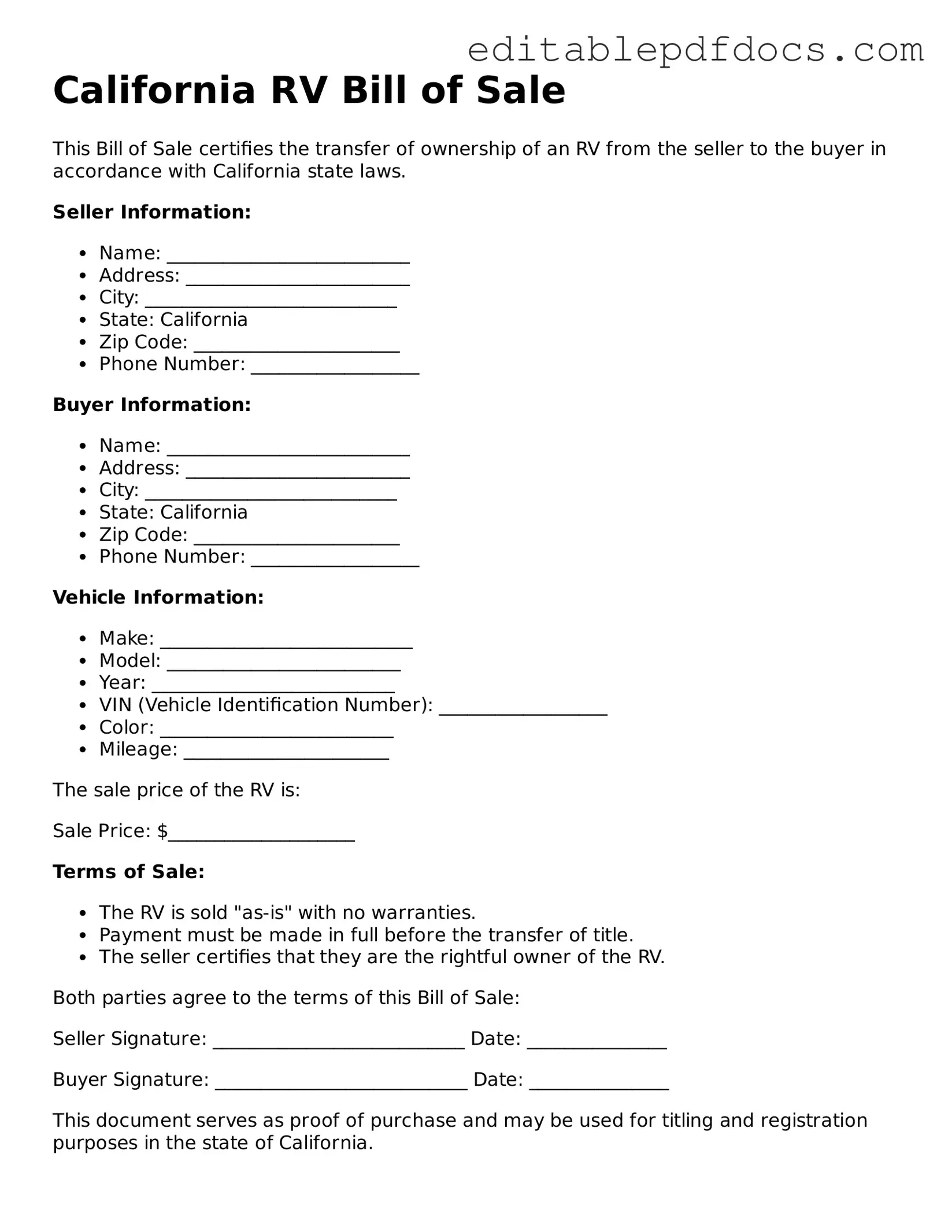When filling out the California RV Bill of Sale form, individuals often make several common mistakes that can lead to complications down the line. One frequent error is failing to provide complete and accurate information about the RV. Details such as the Vehicle Identification Number (VIN), make, model, and year are crucial. If any of this information is incorrect or missing, it can create problems when registering the vehicle.
Another mistake involves not including the sale price. The form requires the seller to specify the amount the RV was sold for. Omitting this information can lead to misunderstandings and potential disputes between the buyer and seller. Additionally, not recording the date of the sale can also cause issues, especially for tax purposes.
People sometimes forget to sign the form. Both the buyer and the seller must provide their signatures to validate the transaction. Without these signatures, the Bill of Sale is not legally binding. It is also essential to ensure that both parties sign in the appropriate places; a misplaced signature can lead to confusion.
In some cases, individuals neglect to provide personal information, such as their full names and addresses. This information is necessary for both parties to establish their identities and for future reference. Missing contact information can make it difficult for either party to reach out if questions arise later.
Another common oversight is not having a witness or notary present during the signing. While not always required, having a witness can add an extra layer of security and legitimacy to the transaction. It is wise to consider this step, especially for high-value sales.
People may also misunderstand the purpose of the Bill of Sale. Some think it is merely a receipt, but it serves as a legal document that can protect both parties. Not recognizing its importance can lead to complications if disputes arise in the future.
Additionally, failing to keep a copy of the completed form is a mistake many make. Both the buyer and seller should retain a copy for their records. This ensures that both parties have proof of the transaction, which can be invaluable if any issues come up later.
Lastly, individuals sometimes overlook the need to check local regulations. While the California RV Bill of Sale form is standardized, local laws may have specific requirements. Being unaware of these can lead to further complications in the registration process.
